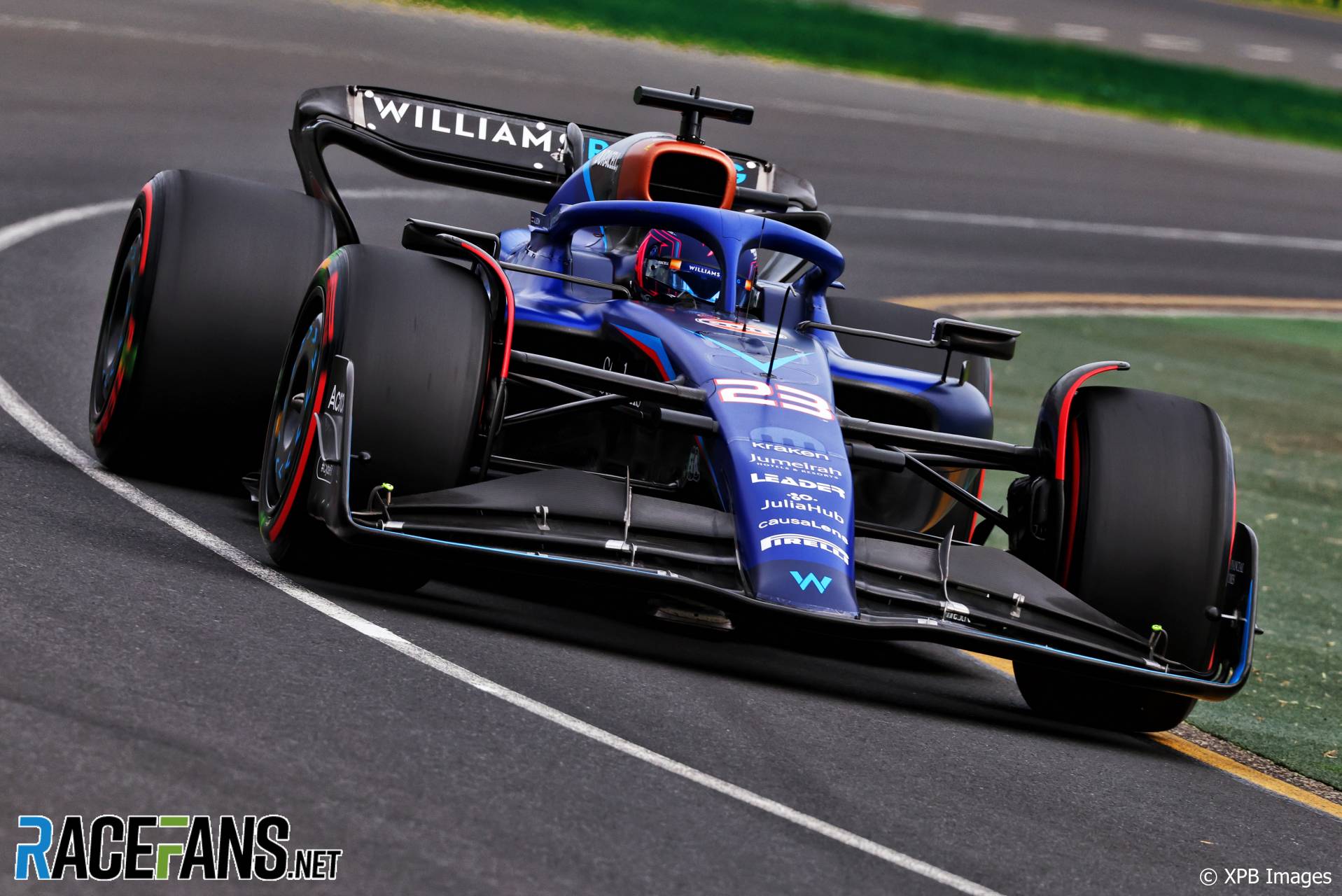Alexander Albon claimed eighth on the grid for the Australian Grand Prix as Williams produced a performance they have been threatening to give since the season began.
The team which finished last in the championship in 2022 was the slowest in terms of outright pace in the first two races of this year. However the FW45 has proved a clear step forward over its predecessor: After Aston Martin, this was the most-improved car of the first two rounds.Albon hit the car’s sweet spot in qualifying to reach Q3. There he produced a lap of 1’17.603, over two-and-a-half second quicker than the team managed around the same circuit a year ago.
That put the team a respectable margin ahead of three rivals: Alfa Romeo, McLaren and AlphaTauri – the latter running a new floor this weekend. Indeed, Albon also out-qualified the two Alpines – although Pierre Gasly lapped fractionally quicker in Q2 he could not repeat it when it mattered most.
Williams therefore joined the seven teams which lapped quicker than the best time seen at this track last year. That marked F1’s return to Albert Park following a Covid-induced two-year absence, and the first time it used the revised Albert Park layout.
The fourth DRS zone which was introduced then dropped last year has been revived for 2023, which helps explain why every team is lapping at least half-a-second quicker than 12 months ago. The biggest improvers have found much more: Aston Martin, who have gained the most for the third event in a row, are four seconds faster than during their dismal 2022 weekend.
Another surprise improvement has come from Haas, which displaced Williams as the second most-improved team. Nico Hulkenberg took them into Q3 for the second time in three races, and the team are almost 2.7s quicker than in 2022.
Advert | Become a RaceFans supporter and
Teams’ performance
Advert | Become a RaceFans supporter and
Field performance
NB. No race 2020-21, track layout changed 2022
Advert | Become a RaceFans supporter and
2023 Australian Grand Prix
- Australian GP to forbid fans from entering track at end of this year’s race
- I only missed one chance to score points this year – Albon
- Formula 1’s stewards should listen to drivers less, not more
- Mercedes unsure whether gains seen in Melbourne were ‘track-specific’
- Why Ferrari saw a ‘real step forward in pure performance’ in point-less Australian GP





Jere (@jerejj)
1st April 2023, 15:05
Was Williams really the outright slowest in both Sakhir & Jeddah?
They didn’t seem to be or at least not in the former, although the order below the first four has generally been pretty mixed, so no clear-cut backmarker or even midfield.
The extra DRS zone has only a marginal impact versus last season over the entire 5.278 km lap, although a greener track surface (from the earlier rain) & a step-harder compound as the softest available (notwithstanding the construction change for this season) minimize the overall improvements to some extent, so with wholly optimal track conditions & C5, the gains would’ve been even larger.
For example, the pole time difference is 1.136 seconds, so possibly around 1.5 with the above benefits.